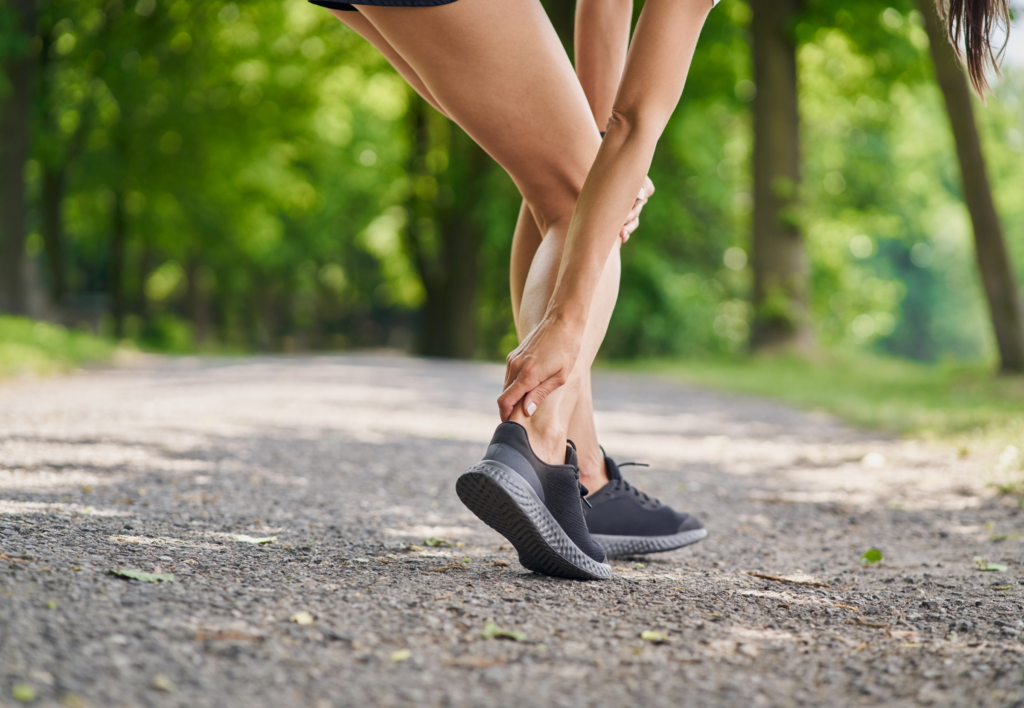How to Warm Up Achilles Tendon Before Running – Key Routine & Exercises
Warming up the Achilles tendon is a pivotal step before embarking on a run. This strong tendon is crucial for the push-off phase when running, and properly warming it up can reduce the risk of injury.
A focused warm-up routine helps to increase blood flow and flexibility in the area, ensuring that your Achilles tendon is ready for the activity to come.
When it comes to warming up for running, don’t overlook the importance of calf stretches. These stretches target the structures of the lower leg, including the Achilles tendon. To effectively warm up the Achilles, you can introduce dynamic movements such as gentle toe raises, leaning wall stretches, and ankle rotations.
By varying the direction of toe points—inward and outward—during stretches, you can more comprehensively prepare the tendon for the demands of running.
Adopting a routine that includes a series of dynamic calf and Achilles stretches can prime these areas for the strains of running. Incorporating low-impact plyometric exercises into your warm-up, such as skipping and hopping, is also beneficial.
These exercises condition the muscles, tendons, and ligaments, increasing their resilience and performance capability. Remember, a warm-up tailored to the Achilles is not just injury preventive; it maximizes running efficiency.
The Best Way To Warm Up the Achilles Tendon Before Running (15 Minutes)
Proper warm-up before running is essential to prime your Achilles tendon and prevent injuries. Focus on dynamic stretches that improve blood flow and enhance flexibility. Wear appropriate running shoes that provide support and start with a brief walk to get your body moving.
5-Minute Walk
- Elevates heart rate
- Gently warms up muscles
Dynamic Stretch Routine (8 Minutes)
- Ankle Rotations (1 Minute)
- Loosen ankle joint
- Enhance mobility
- Jumping Jacks (2 Minutes)
- Increase blood flow
- Prepare body for activity
- Calf Stretches (2 Minutes)
- Wall Stretch: Lean forward against a wall
- Feel stretch in lower leg muscles
- Heel Drops (1 Minute)
- Stretch and strengthen Achilles tendon
- Toe Raises (2 Minutes)
- Improve calf power
- Prepares for running impact

Strengthening Exercises (2 Minutes)
- Standing Heel Raise (1 Minute)
- Builds calf muscle strength
- Balance Drills (1 Minute)
- Standing on one foot
- Enhances proprioception
Final Warm-Up Tips:
- Be gentle and progressive in your approach
- Increase stretches’ intensity gradually
- Cease any exercise if you feel discomfort or pain
Remember to listen to your body and consult with a physical therapist or medical professional for tailored advice, especially if you have a history of Achilles or plantar fasciitis issues. Consistent warm-up practices contribute to stronger performance and a reduced risk of injury.
Pre-Run Warm-Up Essentials
Before embarking on your run, it’s crucial to prime your body, particularly your Achilles tendon, to prevent injuries and enhance performance. A combination of dynamic stretching, targeted exercises, appropriate footwear, and strategic warm-up routines are key.
Dynamic Stretching Techniques
Dynamic stretches prepare your body for the specific movements involved in running. Not only do they increase blood flow to your muscles, but they also improve your range of motion.
- Jumping Jacks: Start with a set of 20 to get your heart rate up.
- Leg Swings: Hold onto a stable object and swing each leg forward and back 15 times.
Targeted Achilles Warm-Up Exercises
Focus on the calf and Achilles to ensure these areas are ready for the impact of running.
- Calf Stretch: Stand facing a wall, extend one leg back, and press the heel down until you feel a stretch. Hold for 15 seconds.
- Heel Drop Stretch: Rise onto your toes on a step, then slowly lower your heels down, feeling the stretch. Hold for 15-20 seconds.
Importance of Proper Footwear
Choosing the right running shoes is essential for maintaining proper running form and minimizing stress on your Achilles tendon.
- Running Shoes Check: Ensure they provide adequate support and fit well to avoid unnecessary strain on your ankles.

Injury Prevention Strategies
Combine strengthening and flexibility exercises with good warm-up practices to reduce the risk of Achilles injuries.
- Strengthening: Incorporate toe raises and heel raises into your routine to strengthen the calf muscles.
- Balance Exercises: Perform balance training to enhance ankle stability.
- Consultation: Regularly consult a medical professional or physical therapist to ensure your warm-up routine aligns with your body’s needs.
Understanding Achilles Tendon Health
The Achilles tendon is a vital link between your calf muscles and your heel, responsible for walking, running, and jumping motions. Its health is crucial, as it endures high stress during these activities, making it prone to overuse injuries.
Achilles Tendinopathy refers to the degeneration of the tendon’s collagen fibers due to stress, often presenting as tendinitis (inflammation) or tendonitis (swelling), terms that are frequently used interchangeably. Achilles tendinitis manifests as pain at the back of your leg or above the heel after activity.
Proper strength training helps maintain tendon robustness, while maintaining flexibility and a good range of motion in your calf muscles supports tendon functionality. Incorporate exercises that gently stretch and work the muscles and tendons in your lower leg to prevent tightness.
| Key Aspect | Pertinence to Achilles Health | Recommended Action |
|---|---|---|
| Collagen Fiber Health | Essential for tendon integrity | Regular low-intensity exercises to promote collagen stability |
| Muscle Flexibility | Reduces tendon strain | Dynamic stretches to increase tendon flexibility |
| Strength Training | Prevents overuse injuries | Gradual increase in exercise intensity |
| Range of Motion | Correlates with injury likelihood | Ankle and calf exercises to improve and maintain |
In the event of Achilles pain or swelling, reduce the intensity of your activities, applying rest and ice to manage inflammation. Prolonged discomfort or recurrent issues should prompt consultation with a health professional.
By respecting your body’s limits and gradually building up the resistance of your Achilles tendon through targeted exercises, you can keep your Achilles healthy and reduce the risk of injury.
Post-Run Recovery and Care
Post-run recovery is crucial to prevent injuries and ensure your Achilles tendon remains healthy. Begin your cooldown with a gentle walk to gradually decrease your heart rate and follow up with stretching to improve flexibility and range of motion in the calf muscles.
- Implement foam rolling for a few minutes on each leg.
- Focus on your calf muscles to relieve any tightness.
Icing:
- Apply ice to the Achilles region for 15-20 minutes after running.
- Helps reduce swelling and inflammation.
Heightened focus on calf muscles can improve heel bone stability and minimize the risk of Achilles-related issues. Integrate massage to promote muscle recovery and address any calf tightness. Additionally, opt for anti-inflammatory measures if you’re experiencing discomfort; over-the-counter medications can aid in reducing inflammation.
For alternative low-impact activities that support Achilles recovery, consider swimming or cycling, which allow you to maintain cardiovascular fitness without excessive strain on the Achilles tendon.
Schedule Rest: Ensure proper rest days to allow your body’s natural healing processes to work optimally.
By incorporating these care strategies, you safeguard against future discomfort and maintain a strong foundation for running longevity. Remember, consistent post-run routines contribute significantly to injury prevention and your overall running performance.






